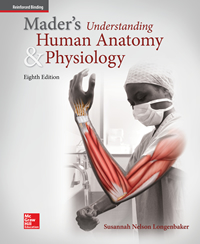1 A) undigested food waste B) used hormones C) metabolic waste D) pathogens 2 A) maintaining blood pressure B) excreting metabolic wastes C) maintaining acid--base balance D) preserving water--sugar balance 3 A) amino acids B) urea C) uric acid D) creatinine 4 A) excreting hydrogen and excreting bicarbonate. B) excreting hydrogen and reabsorbing bicarbonate. C) reabsorbing hydrogen and excreting bicarbonate. D) reabsorbing hydrogen and reabsorbing bicarbonate. 5 A) Activates angiotensin B) Activates vitamin D C) Stimulate the production of red blood cells. D) Vasoconstriction 6 A) aldosterone. B) atrial natriuretic hormone. C) water. D) renin. 7 A) A B) D C) E D) K 8 A) erythropoietin. B) renin. C) angiotensin. D) calcitriol. 9 A) excrete excess hydrogen ions B) excrete excess water C) reabsorption of sodium ions and water D) reabsorption of sodium and calcium 10 A) Kidneys, ureters, urethra and urinary bladder B) Kidneys, ureters, urinary bladder and urethra C) Kidneys, urethra, urinary bladder and ureters D) Urinary bladder, ureter, urinary bladder and urethra 11 A) hilum B) renal capsule C) renal cortex D) renal pyramid 12 A) detrusor muscle. B) rugae. C) cortex. D) trigone. 13 A) rugae B) villi C) transitional epithelium D) pseudostratified columnar epithelium E) Both A and C F) Both B and D 14 A) ureter B) urethra C) renal pelvis D) glomerulus 15 A) micturition. B) mastication. C) deglutition. D) defecation. 16 A) adrenal glands B) bulburethral glands C) prostate gland D) renal hilum 17 A) medulla B) cortex C) lobule D) pelvis 18 A) neuron. B) sinusoid. C) trigone. D) nephron 19 A) peritubular capillaries. B) glomerulus. C) renal sinusoid. D) Bowman's capsule. 20 A) 1 – 3 – 2 – 4 - 5 B) 3 – 1 – 2 – 4 - 5 C) 3 – 5 – 4 – 2 - 1 D) 4 - 3 – 5 – 1 – 2 21 A) cortex B) medulla C) pelvis 22 A) collecting duct B) distal convoluted tubule C) glomerulus D) loop of the nephron E) proximal convoluted tubule 23 A) afferent arterioles and the peritubular capillaries B) efferent arteriole and the peritubular capillaries C) glomerulus and the glomerular capsule D) peritubular capillaries and the kidney tubule 24 A) Formed elements and plasma proteins B) Formed elements and glucose C) Glucose and plasma proteins D) Plasma proteins and salts 25 A) 10 L B) 100 L C) 180 L D) 200 L 26 A) tubular secretion. B) glomerular filtration. C) micturition D) tubular reabsorption. 27 A) collecting duct B) distal convoluted tubule C) glomerular capsule D) loop of Henle E) proximal convoluted tubule 28 A) collecting duct B) distal convoluted tubule C) glomerular capsule D) loop of the Henle E) proximal convoluted tubule 29 A) active transport. B) osmosis. C) facilitated diffusion. D) carrier molecules. 30 A) glomerular filtration + tubular reabsorption + tubular secretion B) glomerular filtration – tubular reabsorption – tubular secretion C) glomerular filtration + tubular reabsorption – tubular secretion D) glomerular filtration – tubular reabsorption + tubular secretion 31 A) afferent arteriole – glomerulus – efferent arteriole – peritbubular capillary B) afferent arteriole – peritubular capillary – efferent arteriole – glomerulus C) efferent arteriole – glomerulus – afferent arteriole – peritubular capillary D) peritubular capillary – afferent arteriole – glomerulus – efferent arteriole 32 A) plasma. B) lymph. C) tissue fluid. D) cells. 33 A) higher; adipose B) higher; muscle C) lower; adipose D) lower; muscle 34 A) Fluid ingested, food ingested and air inhaled. B) Fluid ingested, food ingested and metabolic processes C) Fluid ingested, metabolic processes and air inhaled. D) Food ingested, air inhaled and metabolic processes 35 A) Exhaled air, inhaled air, urine and sweat B) Exhaled air, inhaled air, urine and feces C) Exhaled air, sweat, urine and feces D) Inhaled air, sweat, urine and feces 36 A) proximal convoluted tubule and collecting duct B) proximal convoluted tubule and distal convoluted tubule C) distal convoluted tubule and Loop of Henle D) Loop of Henle and collecting duct 37 A) sodium chloride B) acid C) glucose D) uric acid 38 A) ascending B) descending 39 A) sugar B) urea C) protein D) bicarbonate 40 A) calcium B) chlorine C) potassium D) sodium 41 A) decrease; decreasing B) decrease; increasing C) increase; decreasing D) increase; increasing 42 A) increased urine production. B) decreased urine production. C) no change in urine production. 43 A) hormones B) sodium chloride C) glucose D) urea 44 A) In the loop of Henle. B) In the medulla oblongata. C) Between the afferent arteriole and the distal convoluted tubule. D) Between the collecting duct and the proximal convoluted tubule. 45 A) juxtaglomerular apparatus B) medulla oblongata C) midbrain D) hypothalamus 46 A) juxtaglomerular apparatus B) medulla oblongata C) midbrain D) thalamus 47 A) antidiuretic : increases B) diuretic : inhibits C) antidiuretic : inhibits D) diuretic : increases 48 A) acidosis. B) diuresis. C) alkalosis. D) natriuresis. 49 A) acid B) buffer. C) base. D) salt. 50 A) carbonic acid and water. B) carbon dioxide and bicarbonate C) carbonic acid and bicarbonate. D) bicarbonate and water. 51 A) hyperventilate. B) hypoventilate. C) urinate more often. D) hold your breath. 52 A) 100% B) 95% C) 90% D) 85% 53 A) pyelonephritis B) cystitis C) urethritis D) hypertension 54 A) urethritis. B) cystitis. C) pyelonephritis D) nephritis 55 A) dialysis. B) continuous ambulatory peritoneal dialysis. C) kidney transplant. D) All of the above are treatments for renal failure. 56 A) 8-10 g B) 8-25 g C) 50-250 g D) 8-25 mg 57 A) kidney B) large intestine C) liver D) lungs 58 A) hemoglobin B) urea C) urochrome D) uroglobin 59 A) muscles B) liver C) kidneys D) spleen 60 A) cardiovascular B) respiratory C) endocrine D) skeletal E) All of the above.





